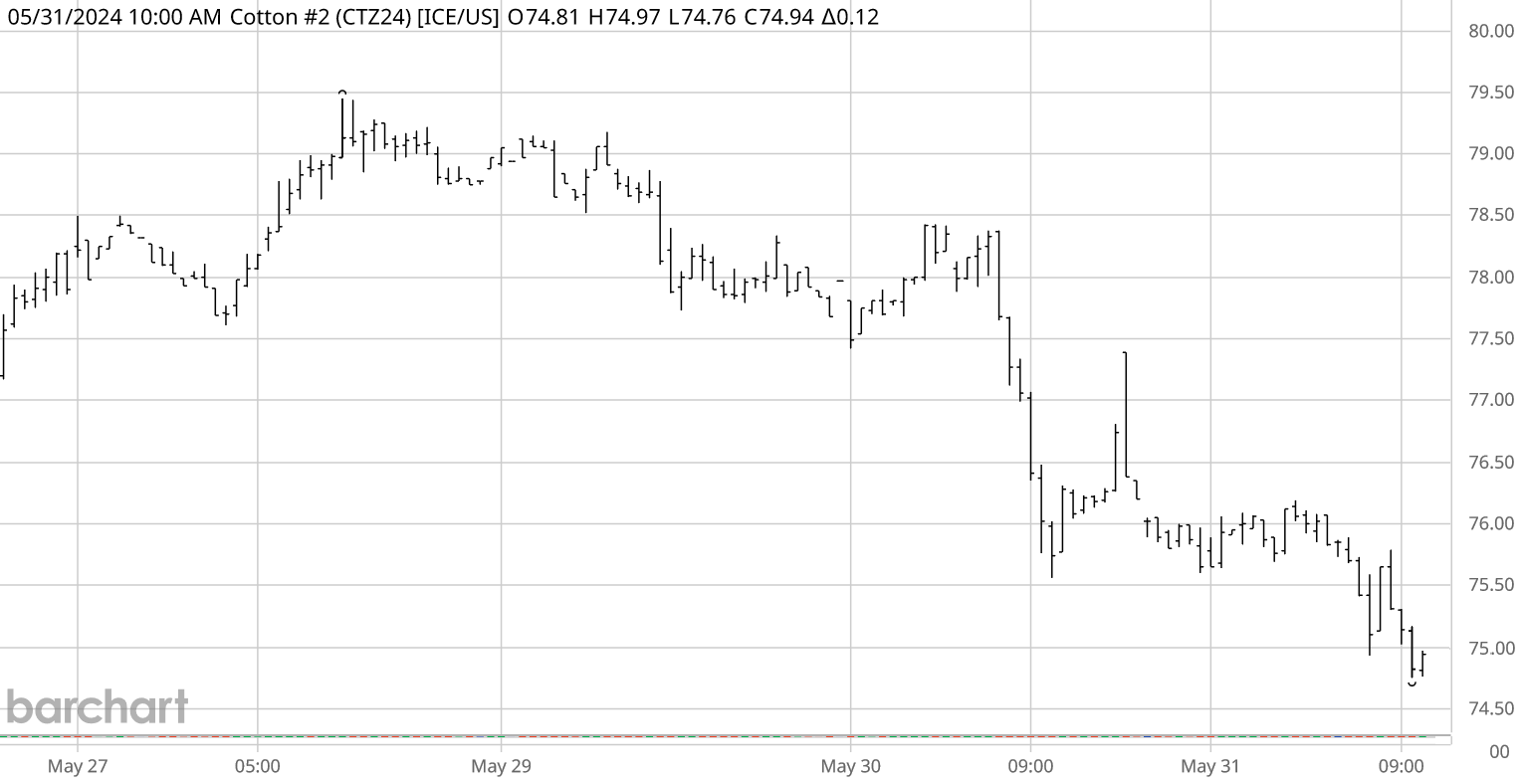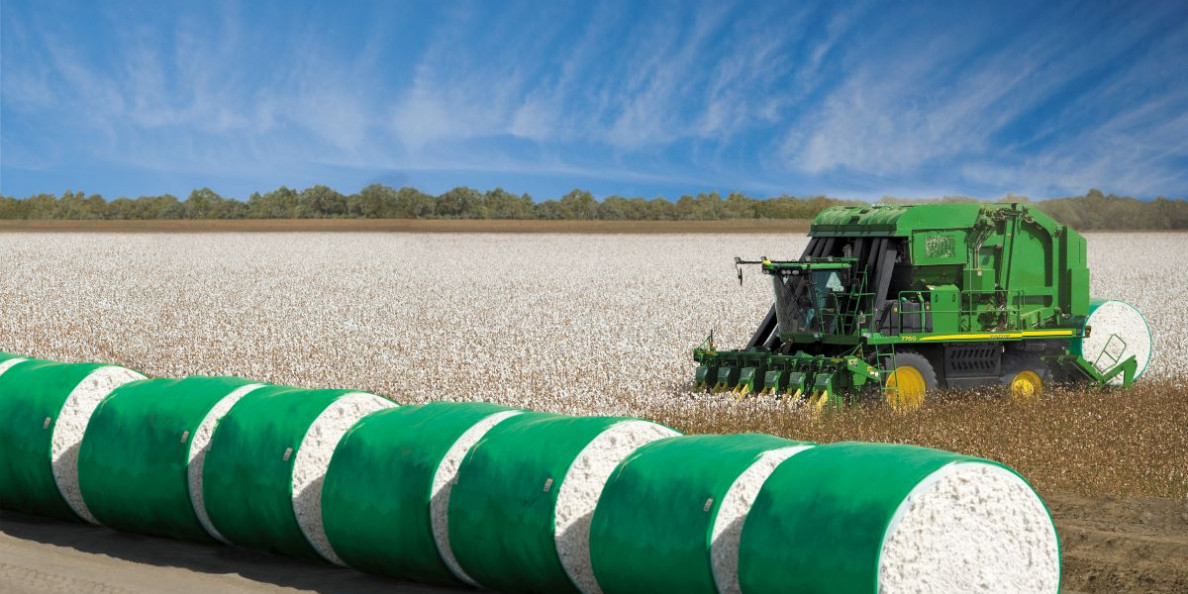For the holiday-shortened week ending May 31, the most active Dec’24 cotton futures contract traded flat and then lower (see chart above courtesy of Barchart.com). The Dec’24 contract settled on Friday at 75.11 cents per pound, down 140 points on the day. Chinese cotton prices were flat across the week while the A-Index of world prices was mixed.
In other ag futures markets, old crop CBOT corn and soybeans, as well as KC wheat, all trended lower this week. The U.S. dollar index trended lower, reversed and climbed to 2-week highs, then downshifted again. Other macro influences (i.e., GDP, inflation, and interest rate policy) continued to reflect mixed expectations.

Cotton-specific influences this week included the slightly early arrival of the Indian monsoon rains. The week also saw scattered rainfall over the eastern half of the Cotton Belt. Unfortunately, these rains continue skippy in South Texas. On the flip side, too much rain in the Mid-South may have prevented some last minute cotton plantings. This week saw good weekly U.S. export sales reported (through May 23). Actual export shipments were under the needed weekly average pace to reach USDA’s target level of exports. USDA’s weekly summary of the U.S. regional markets reflected inactive/slow trading of physical cotton trading activity and light to moderate demand, across the U.S. regions. Several other standard predictors of U.S. cotton demand are either bearish (low levels of on-call sales) or in a state of flux (peaking certified stocks).
ICE cotton futures open interest followed a mixed pattern across the week ending May 30. The recent net short positioning of the hedge funds may have halted as the weekly (Tuesday May 28) snapshot of speculative positioning showed an increase in long positioning with a net increase of 1,955 hedge fund longs, reinforced by 5,849 fewer (liquidated) hedge fund shorts, compared to the previous week. The Index Fund net long position was barely changed week over week.
For more details and data on Old Crop and New Crop fundamentals, plus other near term influences, follow these links (or the drop-down menus above) to those sub-pages.
Source: TAMU

